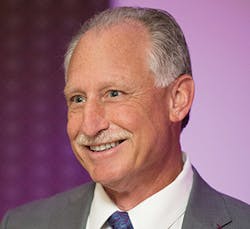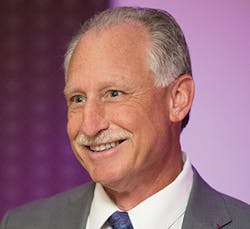How payers can begin to pilot teledentistry
I firmly believe that teledentistry has the potential to provide significant claims cost savings for dental plans as well as savings to our overall health-care system. Moreover, teledentistry can improve access to care for many and potentially act as the gateway for medical-dental integration. However, dental insurers have been slow to embrace teledentistry. So why is this the case?
In this article, we will look into this development more closely. I will then offer suggestions as to how payers can create pilot programs for teledentistry.
Background
In the 2018 Milliman white paper Value proposition for teledentistry: Cost savings, improved services and more,Joanne Fontana and Donna Wixconclude the following: “Telehealth and teledentistry in particular provide a value proposition for many stakeholders within the dental industry. Teledentistry can aid in reducing dental claims costs, provide opportunities to grow in individual practices, [and] expand services to the underserved [ . . . ].”1 In addition, as more focus and attention are paid toward the integration of medical and dental care, the white paper notes that teledentistry “may provide a cost-effective way to manage the oral health of patients who suffer with chronic conditions, with the potential to save on dental claims costs and even medical costs to the extent that better oral health can aid in managing a disease’s progression.”1
Citing various sources, a 2017 article in Forbes titled “Why some millennials aren’t Smiling: Bad teeth hinder 28% in job search” noted the following: “When asked why they don’t get dental care, cost is the first reason millennials cite, followed by ‘inconvenient location or time.’” The Forbes article further notes that millennials are the most sensitive to dental costs due to competing expenses, such as student loans and new-family costs. The article notes that “[t]he dental system is going to have to change to appeal to millennials ‘who are all about convenience.’ Millennials aren’t tied to the idea of a personal relationship with one dental practitioner; they are used to comparing services and costs and ordering on their smartphones—similar to getting an Uber or Lyft—and they likely won’t tolerate inefficiency or long waits for appointments.”
Given this context, the question becomes: “Why aren’t dental insurers embracing teledentistry?”
Dental payers and teledentistry
Dental insurance usually provides coverage for two exams per year. However, some individuals may not need care this frequently. If this idea is extended to the portion of the general population who has very good oral health, not only would the cost of exams be reduced (i.e., teledentistry exams would be less than the cost of an in-office exam), there is the elimination of the costs for services such as prophies, x-rays (usually two to four bitewings), and other common elective procedures (e.g., replacement of amalgam with composite). These savings can be shifted to those with greater need, be recognized as utilization savings, and be reflected in reduced rates.
There are some in the industry who aren’t certain about the potential savings. The question I have heard them ask is this: “Will there be enough adoption by members and cost avoidance on certain services to pay for this new service, as well as the other services that certain segments of the population who we now reach will need?”
My emphatic answer to this question has been this: “Yes, you will see the savings.” I advise that the answer will be found in the data. But the only way to get that data is to run a teledentistry pilot program.
Pilot programs
In my estimation, there are three core factors involved in deciding which pilot model is best suited for an organization: determination of pilot focus, need for scale and duration, and geography. The models are not mutually exclusive, so multiple pilot populations can be selected to meet multiple objectives. Let’s look at the individual factors more closely:
Determination of pilot focus—First, choose the pilot program’s focus. Are you doing this to support a community mission, such as improved access or improved oral health? Are you doing it for claims cost reduction, i.e., reducing the average claims cost per member? Or is it a combination of both? I recommend clearly defining up front the results you are looking to achieve.
Need for scale and duration—Second, based on the demographics of the population with whom you choose to pilot, I estimate that you will see teledentistry utilization in the range of 5% to 15%. To get meaningful data that will allow you to determine whether this should be permanently added as a benefit program for your members, the pilot population needs to be large enough. I recommend a minimum of 50,000 members.
In addition, a pilot period of four to six months gets most members through the normal exam recall cycle and should provide you with the data you need to make a strategic decision. This time period can be shortened by ramping up communications to the pilot community in an effort to promote utilization.
Geography—Determine whether you want to limit this to members who are residing/receiving care in one state. This may make communications and administration easier. Or, offer this across multiple states. I personally feel a broader reach provides more representative results.
Sample models
Below are a few options for pilot programs. Again, these are not mutually exclusive.
Member engagement pilots
• No-visit population: Pilot with members who have not visited the dentist in the past 12-plus months.
• Limited-access patients: Pilot with members who live in rural areas and locations with known access issues.
Cost-impact pilots
• Healthy population: Pilot with members who have consistently exhibited good oral health behavior to determine whether claims costs can be positively impacted.
• Demographically diverse population: Pilot with members across various demographics, such as age and location, to determine differences in adoption and utilization.
Client/segment impact
• Client-specific: Pilot only with a select few large clients who would be willing to offer this benefit to all their members.
• Market segment: Pilot with certain business industries/segments that historically tend to have higher utilization patterns.
Conclusion
Adding a new benefit to a dental program is difficult. Utilization patterns are unknown, which generates concerns about loss ratios. However, all we need to do is to look at successes in telehealth and telemedicine to know that consumers are widely embracing such services.
Therefore, claims savings are achievable. In order to mitigate uncertainties and provide reassurance about the benefits of teledentistry, conducting a well thought out and crafted pilot program should provide the answers you need to move forward.
References
References are available in the online version of this article. Visit dentaleconomics.com and search “teledentistry pilot programs.”
BRUCE D. SILVERMAN is president of BD Silverman Consulting. Mr. Silverman has more than 35 years of experience in the dental benefits industry. As a former senior vice president and chief operating officer of Delta Dental of New Jersey, his experience runs the gamut of insurance operations and strategy. Since 2016, BD Silverman Consulting has helped multiple clients achieve their objectives. For more information, contact Mr. Silverman at [email protected] or visit bdsilverman.com.

